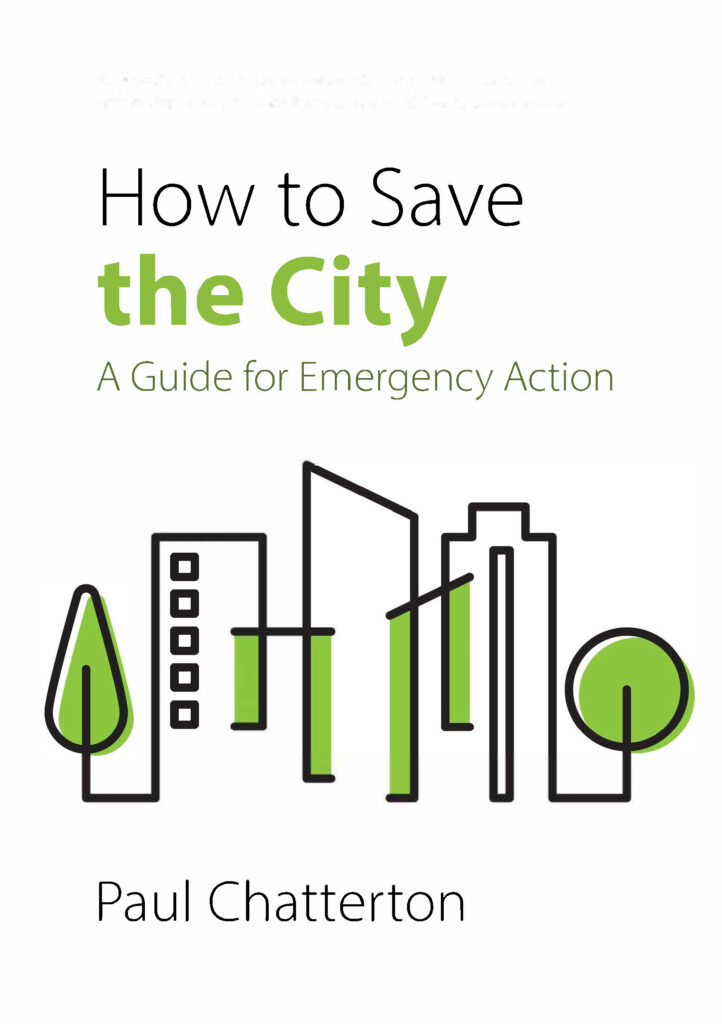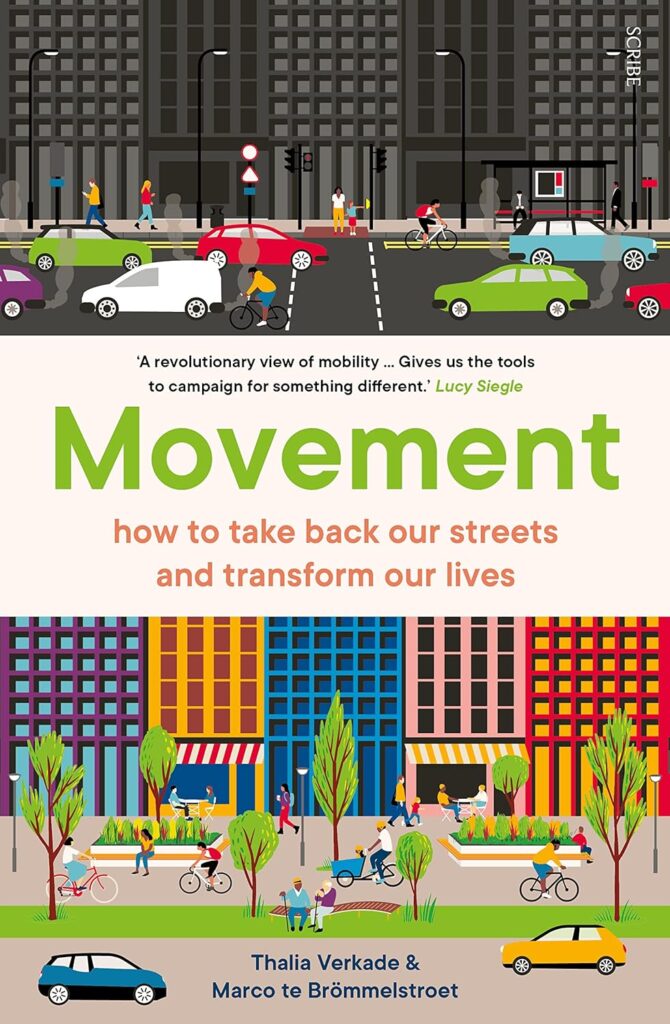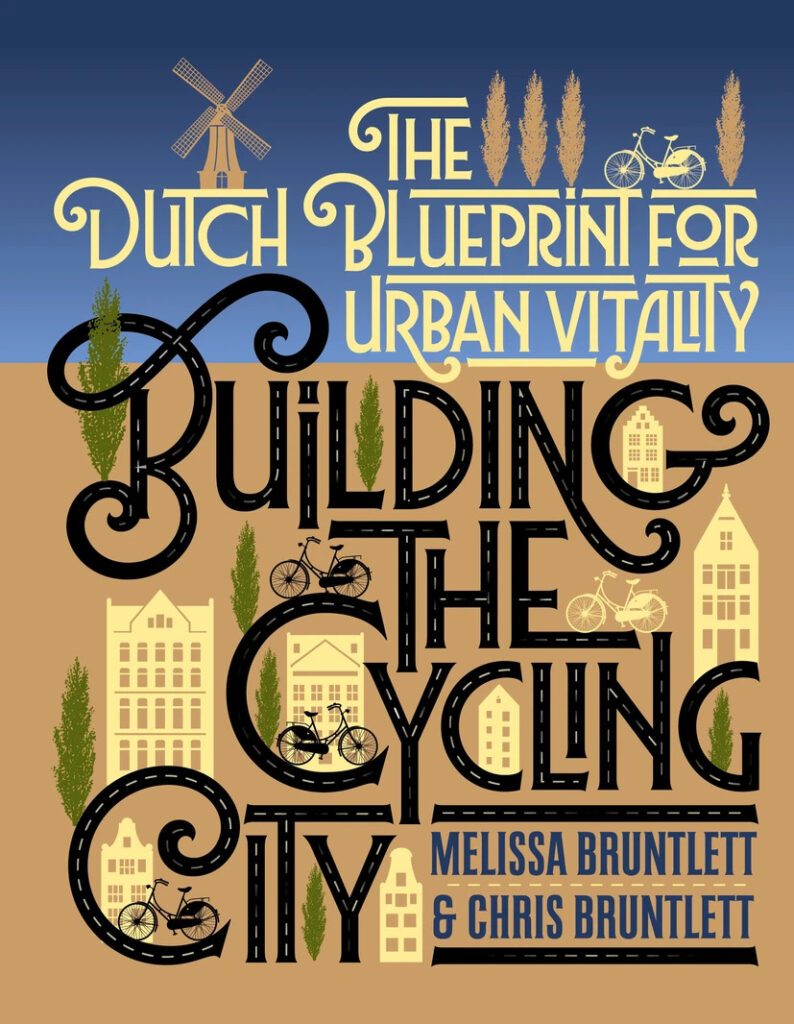Language is not a neutral mirror of reality, but has a profound impact on what we see, what we do not see and how we act and shape our future together.
Marco te Brömmelstroet

What is it about?
What if we dared to challenge the worldviews and assumptions that shape our thinking about mobility? How might we explore alternative narratives, embrace diverse perspectives, and draw inspiration from experiments to drive change in mobility? Can we conquer obstacles and seize opportunities to transform urban mobility? “Non-Boring Mobility Innovations” is an essay book that delves into these pivotal questions, envisioning a refreshingly different mobility future.
“Non-Boring Mobility Innovations” consists of twelve essential essays on mobility, published by The Lab of Thought. This collection serves as the final assignment, challenging students to compose academic essays that develop arguments regarding alternative approaches to addressing urban mobility challenges. The book is structured with an introduction, an inaugural lecture, and twelve chapters that delve into alternative narratives surrounding mobility innovations and policy interventions.
As the Inaugural lecture, Prof. Dr. M.C.G. te Brömmelstroet, discusses how can we expand our range of thinking about mobility by focusing on language not as mirror of reality but to simplify complex reality, make choices, and take actions. For making urban mobility future, we need to challenge the traditional mobility language and think about alternative narratives. The first step is uncovering dominant narratives which is the main goal of this book.
“When we look to the past, when we try to understand the present, but also when we are thinking about our urban mobility futures, we should therefore turn our attention to the language with which we think, not only as something we use but also as something we can ourselves create, together”
(p. 17)
The first chapter, New, but not Innovative, is a critical essay that uses Amsterdam’s new “e-hubs” as a case to challenge the cultural narratives of shared electric mobilities with a critical argument on innovations around shared mobility services such as e-hub failed to challenge automobility and challenge private car ownership. After discussing the system and narrative underlying the e-hub, it presents two alternative interventions; The Neighbour Hub and The Parklet, related to the goal of the e-hub, but are based on different narratives; mobility as a commons and mobility as an unnecessity.
Chapter 2, The German 9€ Ticket and the Mobility Transition, attempts to rethink mobility as an “unnecessity” by questioning “9-Euro-Ticket” by the German government policy and exposing its shortcomings in terms of radicality and systemic change that fails to challenge mainstream conceptualizations of mobility and the daily commute. It reflects on the implications of the intervention, outlines an analysis of its impact on the transportation system, and proposes two alternative interventions rooted in different narratives and perspectives on the transport system.
Chapter 3, From Nay To Play. An experiment transforming a shared space into an adventure playground, provides a different view to look at a shared space at Amsterdam Central Station, not as a space to optimize the traffic but as a space to play, learn, and have social interactions. It proposes a transitional experiment to transform the shared space into a temporary adventure playground to enable creative play and social interaction. Overall, it encourages a shift in perspective from efficiency-driven traffic interventions to holistic considerations of social interaction, play, and mobility as essential elements of shared spaces.
Chapter 4, Imagination Beyond Frontiers: From Bike share to Meeting Place, looks at the bike sharing system behind the functional tool for traveling but a meaningful meeting place to reinforce social interaction as an alternative narrative. It discusses the Vélib bike share system in Paris and explores its underlying narratives, challenges, and potential for change and proposes alternative narratives such as mobility as communication and mobility as a meeting place, aiming to leverage the existing Vélib infrastructure to foster conviviality and community engagement.
In Chapter 5, Taking a Step Back: Designing Alternative Mobility Futures Representing people-centric values, the critical focus is on Berlin’s future Radbahn plan and how this project focuses primarily on maximizing utility and how it is a failed opportunity to use cycling infrastructure as a way to foster cyclin as a social interaction whit this question in the mind: What is a city, if not a place for people? It also outlines a transition experiment framework for testing interventions in a temporary setting, with a focus on monitoring, learning, and stakeholder engagement to create people-centric urban spaces.
Chapter 6, Free Public Transport Getting Urban Mobility Back on Track., proposes to take a social justice lens to address free public transportation (FPT) policies and focus on mobility as justice and mobility as a common rather than mobility as efficiency. It outlines a transition experiment to test the feasibility of FPT and gain public support, detailing the exploration of pathways, experimenting phase, and evaluation processes.
Chapter 7, Compact Cities and Bikeshare Networks Powering the Adoption of Electric Bicycles, imagines a world in which e-bikes can foster a sense of belonging and community by making new alternative narratives around e-bikes. It argues that focusing only on speed and distance would be a mindset rooted in the status quo transportation paradigm of “mobility as disutility” and we need to support the alternative narratives centered around unlocking the social potential of residents’ local communities.
In chapter 8, Shared Spaces: Improving the system through deconstructing the dominance of traffic flows, theauthoruses Amsterdam Central Station as a case-study of a shared space with tensions between different users and argues that shared spaces paradoxically posing a threat to the livability of public space if exclusively dedicated to traffic flows. Alternative narrative should be mobility as social interaction to enable and nurture diverse interactions and altruistic social behavior in shared spaces.
Chapter 9, POLYCENTRICITY FOR WHOM? Rethinking the N-minute city through public space at the margins, considers the concept of ‘N-minute’ city and the polycentric city by considering Utrecht’s new plan as a case, presenting a fundamental question that how polycentricity could really benefit the city and its residents overall. The essay attempts to explore polycentricity through a different lens and create alternative narratives to promote social inclusion and cohesion.
Chapter 10, Opening the ‘van Woustraat’ for more than vehicular throughput: Where people can redefine what a street should look like, brings attention to the insufficient boldness in the upcoming revamp of Amsterdam’s van Woustraat, emphasizing its adherence to conventional notions of smooth traffic flow. It goes on to explore the potential for reimagining streets as catalysts for social cohesion.
In chapter 11, Smart, smarter smartest? Bringing sustainability mobility back in the political arena, de-politicization of e-bikes has been discussed. With a critical lens, the essay shows how smarter e-bikes do not lead to new radically progressive thinking and planning. It critically examines innovation’s impact and explores alternative narratives such as ‘mobility as play’ and ‘mobility as social interaction’, as potential avenues for redefining sustainable mobility.
The final chapter, Build, Build, Build! But What and Why? breaks it down how big housing projects in the Netherlands and their dependence on mobility and smooth connections are consuming a lot of space in the city. As a result, these projects are putting a damper on the overall livability of urban areas and the togetherness of the people living there. For the author, Alternative mobility narratives are necessary to make a clear answer to this main question: How can we rethink urban mobility systems within inner city area redevelopment projects? By illustrating narratives like “Mobility as Unnecessity” and “Mobility as Common”.
What approach does it take?
The primary focus of the book is to question traditional urban mobility narratives, deconstruct their frameworks, and offer alternative narratives to incite radical changes in mobility. This book stands out by highlighting how language and narrative construction, when applied to the complex realities of urban systems, can fundamentally transform our cities.
Who might be interested in this book?
The book offers a compelling perspective for those eager to challenge prevailing narratives on mobility and contemplate alternative futures. It provides valuable insights for seeking alternative narratives through systemic thinking, offering critical insights that have the potential to transform our cities and question current mobility paradigms.
Further details
- Academic disciplines: Urban Mobility and Urban Planning
- Geographical scope: –
- Relation to cycling: The bicycle is the main topic in several chapters.
- Reference (APA): Te Brömmelstroet, M., Bertolini, L.L. Grayson, & Lebrin, B. (Ed.) (2023). Non-boring mobility innovations: Twelve Essential Essays on Mobility. The Lab of Thought Publishing.
The publisher website: The Lab of Thought
Visit our related online course: Alternative Mobility Narratives



